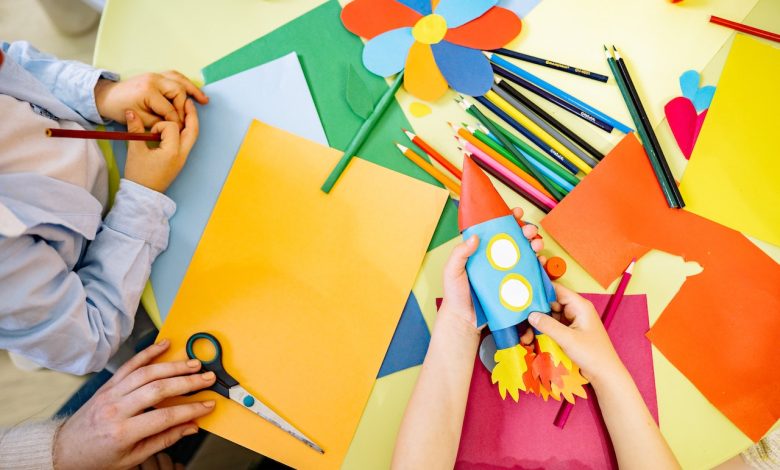
Technology in art education has altered the classroom. With the digital tools available today, the learning atmosphere is so immersive it does not restrain the students from exploring their creative side. However, the traditional teaching methods in art education will retain their prominence. But enhancing learning and engagement involves discovering the perfect balance between incorporating technology and conventional art education approaches.
Technology dominates today’s world, and its influence will only continue to grow in the years to come. Therefore, art teachers have to catch up with the latest technological trends to enhance learning and engagement in the classroom. However, as teachers, you may resist utilizing technology in art education.
The primary reason for hesitation is the presumption that technology will replace conventional teaching methods in art education. Instead of looking at it as a replacement, you can explore how to leverage technology to enhance learning and engagement in the classroom. Unlike the conventional method of teaching art, technology gives the freedom to experiment and explore the sphere otherwise unexplored.
Furthermore, integrating technology into art education also equips students with the necessary skills they would require in today’s world while enhancing learning and engagement in the classroom.
This article explores how combining technology in art education enhances learning and engagement in the classroom.
1. A new medium of creating art
Technology in art education gives students a unique platform for creating art and exploring different mediums. The developers have developed many applications that students can utilize to create their art and manipulate the traditional art they have created.
Here are a few suggestions that you can utilize in the classroom;
- Aviary
- Paper 53
- Doodle Art
- Green screen
- KaleidaCam
- PicsArt
- Procreate
Applications mentioned above allow students to create art and explore other areas like animation and green screen.
2. Automation of class schedule
Technology in art education does not limit to exploring the creative aspect. It also eases scheduling classes for the teachers. For instance, in a conventional establishment, potential students will contact the institute directly by email or phone. The teachers or the administrative staff respond to student inquiries and provide the information requested. The process consumes considerable time, and the students can only contact the institute during regular working hours.
You can consider digitalizing the process with art class scheduling software like Picktime. The software features a booking and widget that are customizable. You can quickly embed them into the website and the social media. That is, if you maintain a solid online presence, it will further enhance the visibility of the art institute. After the integration, students need not contact the institute to sign up for art classes. They can enroll for the class directly from the website 24/7.
Following up with the students is essential to ensure that they attend the classes. The software sends automated reminders by email and SMS. That informs the students of the class schedule and what the class will be about. So they can prepare for the class. Furthermore, if you offer online courses, you can include the links to attend the class in the automated reminder for instance, Google Meet and Zoom.
Handling multiple sessions is a challenge daily. That software eases that with the calendar feature. It provides a comprehensive summary of the daily class schedule. So you can organize your day effortlessly, giving you control over your schedule.
The software also permits you to create a secure student information database to ensure their privacy. Furthermore, if the institute expands to other locations, there is no need to make any additional investment for software support. Picktime helps you to ease enrolling for art classes for multiple locations.
3. Technology helps students to transform traditional art
These days students have ample opportunities to alter their art created with various applications. There is a widespread practice of app smashing, where students utilize one or more apps to make changes in their artwork. For instance, the students can upload the picture they have drawn in one app and make additional changes in another one. That will allow them to experiment with their artwork and further improve them.
4. Give your student a paint-pouring challenge
It is a challenging task and a scientific process. But it can produce excellent results if implemented correctly. You can take the process a step further with digital enhancements. After completing the task, ask your students to photograph the artwork and produce a new image. You can then challenge your students to find different shapes in the picture. The purpose of the activity is to ignite their creativity and develop new ideas from the existing ones. You can permit your students to utilize any digital platforms for this activity.
5. Watercolor and chalk background
If you want to introduce your students to new digital platforms, you can ask them to draw a picture. That serves as a background for the digital art that they are to create. Creating images with watercolor and chalk can produce excellent results with digital enhancements. That will permit the students to explore the possibilities of utilizing art produced traditionally that will be a background image for digital images.
6. Encouraging students to create real-life images
Another role technology in art education can play in enhancing traditional art is giving life to it. You will likely wonder how it would be possible to give life to conventional art. That is where the concept of animation comes. The students do not necessarily have to use complex techniques. They can begin by exploring the basic ones. Once they are through with basic techniques, they can explore the complicated methods.
7. Leverage digital platforms to create traditional art
The students harness the potential of digital platforms to create traditional art. That will ease the process of creating art. It is easy to move the objects around to find the best color composition and placement. It also helps to speed up the process of creating the art. For instance, if the design of the art does not go as planned, then you have the power to use the undo button.
To sum up, the influence of technology is visible in today’s world, and we are all surrounded by technology. Leveraging the potential of technology in art education simplifies the designing process and gives the freedom to explore the creative aspect even further to push the limits.








